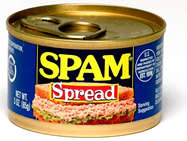I’m happy to announce the 103rd curl release: curl and libcurl 7.18.0.
No less than 35 persons beside myself contributed with info, reports and/or code to make the release as it turned out. We’ve added a bunch of new features and we’ve solved well over 30 different bugs. This is the news:
Changes:
- data-urlencode
- CURLOPT_PROXY_TRANSFER_MODE
- no-keepalive – now curl does connections with keep-alive enabled by default
- socks4a added (proxy type CURLPROXY_SOCKS4A for libcurl)
- socks5-hostname added (CURLPROXY_SOCKS5_HOSTNAME for libcurl)
- curl_easy_pause()
- CURLOPT_SEEKFUNCTION and CURLOPT_SEEKDATA
- keepalive-time
- curl help output was re-ordered
Bugfixes:
- curl-config –features and –protocols show the correct output when built with NSS, and also when SCP, SFTP and libz are not available
- free problem in the curl tool for users with empty home dir
- curl.h version 7.17.1 problem when building C++ apps with MSVC
- SFTP and SCP use persistent connections
- segfault on bad URL
- variable wrapping when using absolutely huge send buffer sizes
- variable wrapping when using debug callback and the HTTP request wasn’t sent in one go
- SSL connections with NSS done with the multi-interface
- setting a share no longer activates cookies
- Negotiate now works on auth and proxy simultaneously
- support HTTP Digest nonces up to 1023 letters
- resumed ftp upload no longer requires the read callback to return full buffers
- no longer default-appends ;type= on FTP URLs thru proxies
- SSL session id caching
- POST with callback over proxy requiring NTLM or Digest
- Expect: 100-continue flaw on re-used connection with POSTs
- build fix for MSVC 9.0 (VS2008)
- Windows curl builds failed file truncation when retry downloading
- SSL session ID cache memory leak
- bad connection re-use check with environment variable-activated proxy use
- –libcurl now generates a return statement as well
- socklen_t is no longer used in the public includes
- time zone offsets from -1400 to +1400 are now accepted by the date parser
- allows more spaces in WWW/Proxy-Authenticate: headers
- curl-config –libs skips /usr/lib64
- range support for file:// transfers
- libcurl hang with huge POST request and request-body read from callback
- removed extra newlines from many error messages
- improved pipelining
- improved OOM handling for data url encoded HTTP POSTs when read from a file
- test suite could pick wrong tool(s) if more than one existed in the PATH
- curl_multi_fdset() failed to return socket while doing CONNECT over proxy
- curl_multi_remove_handle() on a handle that is in used for a pipeline now break that pipeline
- CURLOPT_COOKIELIST memory leaks
- progress meter/callback during http proxy CONNECT requests
- auth for http proxy when the proxy closes connection after first response




